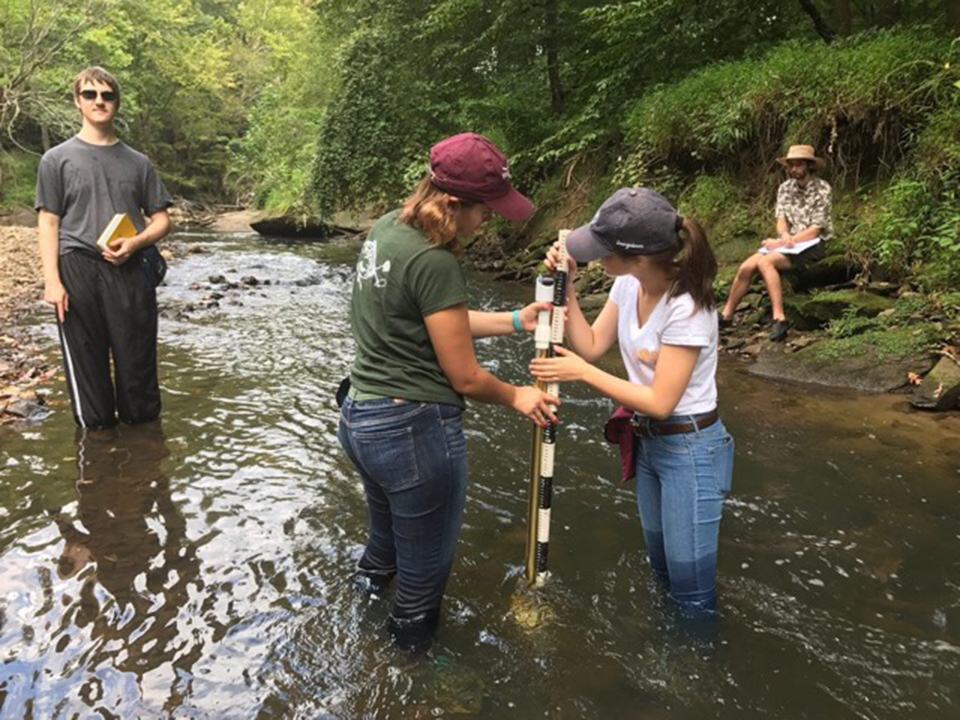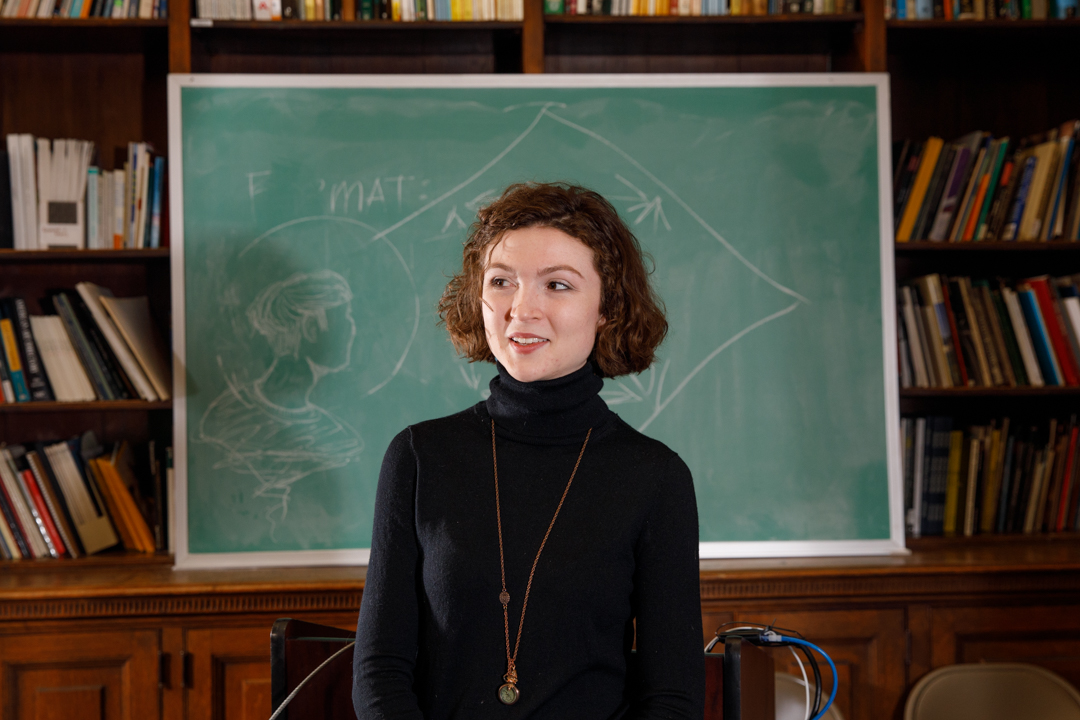By Kristen Mitchell
Maggie Moss, a senior majoring in geological sciences, is spending her summer break from The George Washington University in Yellowstone National Park in Wyoming and Grassy Creek Reservoir in Montana, conducting research at sites connected to the Yellowstone Supervolcano.
Ms. Moss was inspired to return to the Yellowstone National Park region this summer after researching there with her Columbian College of Arts and Sciences classmates. She was awarded the Luther Rice Undergraduate Research Fellowship to pursue her research this summer and will present her work at Research Days 2019 with guidance from Richard Tollo, professor and director of the geology program.
Read more about what Ms. Moss is looking to discover this summer:
Q: What kind of research are you working on this summer?
A: This summer I will analyze a section of Lava Creek Tuff, which is a rock formation of the 650,000 year-old eruption at Yellowstone Supervolcano in the midwestern United States. I will compile a detailed sequence of the geologic structure, collect rock samples and conduct microscopic and geochemical analysis of the ancient volcanic ash.
Q: What is your primary research goal?
A: My primary research goal is to investigate the volcanic textures found in the ash flow. In geology, it is often the microscopic details of a rock that provide the most compelling evidence for theories about large-scale events like this historic eruption. With my analysis of the textures found in this particular flow, I hope to better understand both the mechanisms of volcanic ash flows and the heat source that continues to fuel the Yellowstone Supervolcano today.
Q: What got you interested in this line of research?
A: My interest in volcanoes is actually what led me to pursue a degree in geology my freshman year. Then last summer, this nascent passion came full-circle when I traveled to Yellowstone National Park with my volcanology seminar class and visited the site of my current project. As we spent the day clambering over the towering ash structure, I became fascinated by its textural progression and decided to take on a project aimed at answering some of the site’s various unknowns.
Q: What do you hope to have learned by the end of the summer?
A: By the end of the summer, I hope to be on the road to making a significant discovery in my field, but just as importantly, I hope to have developed the tools to design, implement and discuss methods by which to answer future research questions. For me, one of the most important aspects of my undergraduate research is learning from my adviser about how to approach scientific problems, and my goal is to come out of this project with a sense of independent capability.
Q: What is one challenge you’ve faced so far, and how have you tackled it?
A: The biggest challenge I have faced in my research so far is timing. The field season is short, our time out west this summer is even shorter, and I have been preparing for this obstacle by conducting as much remote research as possible before the trip.
Q: What do you plan to do with all the information you have gathered once you return to GW?
A: When I return to GW the fun will begin! I will be using the rock and research labs to create thin sections compatible with our microscopes as well as preparing samples for geochemical analysis. Once I analyze the data gathered from lab work, I will begin writing a report on my findings.
Q: Did you receive any scholarships or funding that allowed you to complete this work?
A: I am fortunate to have received scholarship funding from the Luther Rice Undergraduate Research Fellowship. Support from this program has allowed me to conduct my thesis project, and I am so grateful to have been chosen as a 2018 fellow.
To learn more about available research opportunities contact the GW Center for Undergraduate Fellowships and Research.



